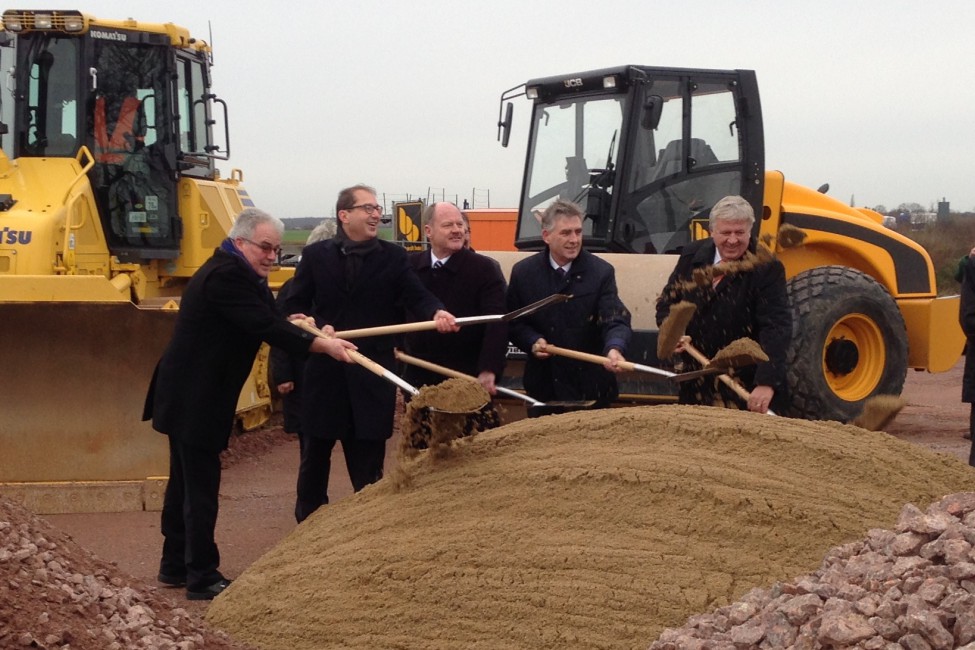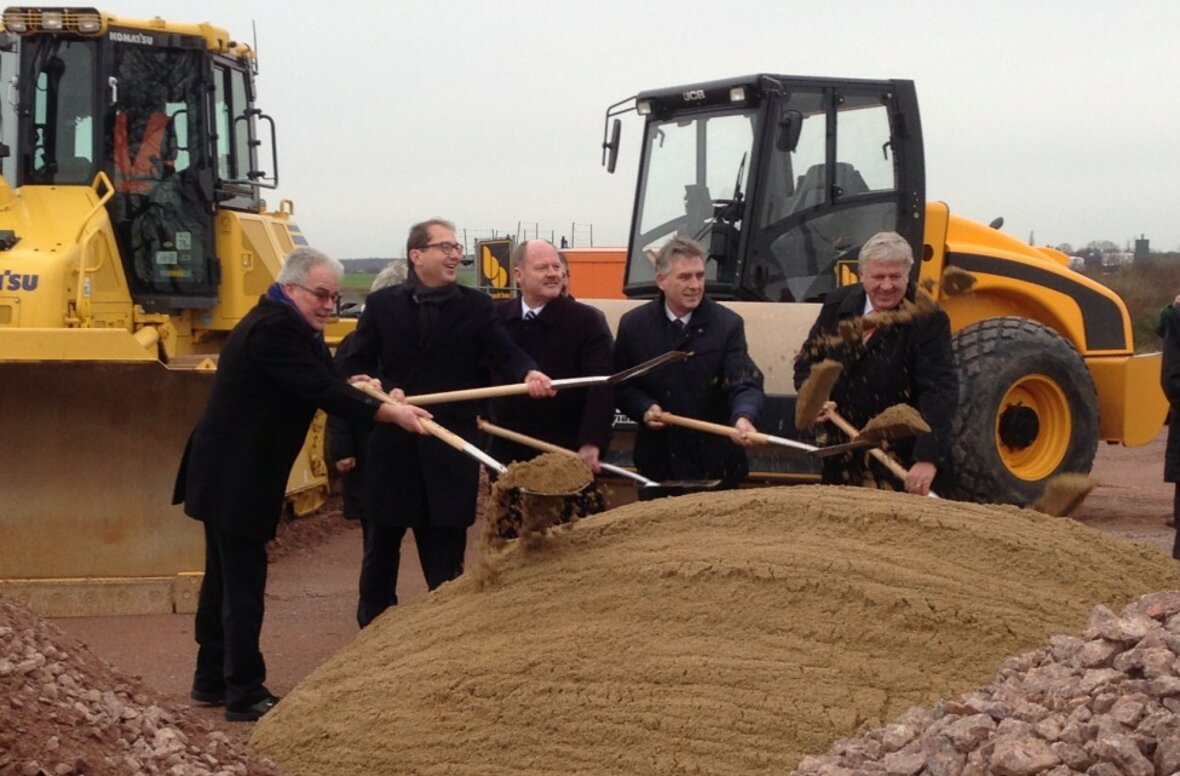Ground-breaking ceremony for the gap closure of the B 6n
On 30 November 2015, the Federal Transport Minister Alexander Dobrindt, together with the Minister for Regional Development and Transport of Saxony-Anhalt Thomas Webel, signalled the start of the gap closure of the “Nordharz highway” in the form of the first cut with a space at the Thurland junction.
With the construction of the 17th construction stage of the B 6n, the 125-km-long east-west link between the A 395 (Bad Harzburg) and the A 9 at Thurland is completed and should be opened to traffic in 2018.
On 30 November 2015, the Federal Transport Minister Alexander Dobrindt, together with the Minister for Regional Development and Transport of Saxony-Anhalt Thomas Webel, signalled the start of the gap closure of the “Nordharz highway” in the form of the first cut with a space at the Thurland junction.
With the construction of the 17th construction stage of the B 6n, the 125-km-long east-west link between the A 395 (Bad Harzburg) and the A 9 at Thurland is completed and should be opened to traffic in 2018.
The route of the 15-km-long section is already being investigated by archaeologists, and construction work should begin next year. The construction costs are estimated at about EUR 51 million and will be realised in nine award pacts.
In the planning consortium with KEMPA Ingenieurgesellschaft mbH, KREBS+KIEFER Ingenieure GmbH is working as a project manager and is commissioned with the planning in work phases 5 and 6.
A major challenge is to create safe crossings on the B 6n for the largest population of spadefoot toads in Saxony-Anhalt. This is provided in the form of amphibian conduits and a number of amphibian passages.

